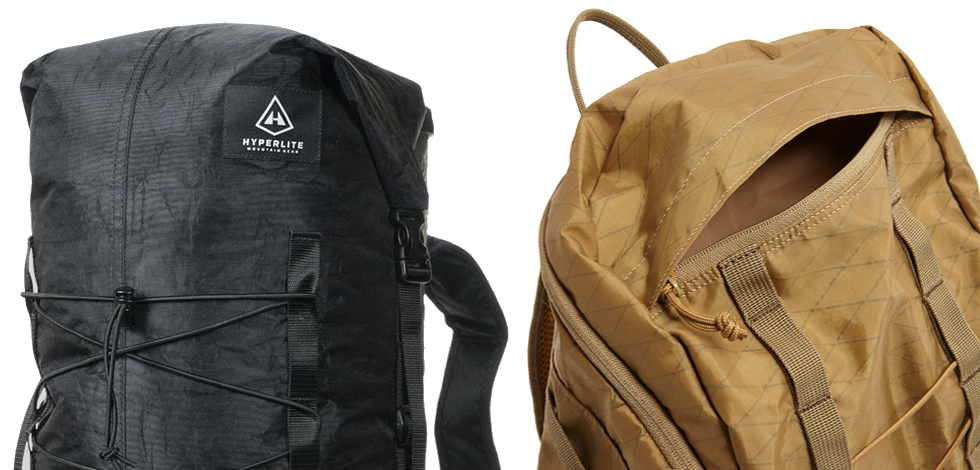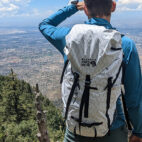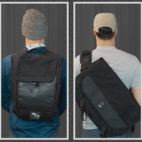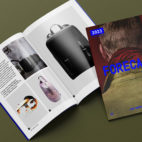Dyneema vs X-Pac: Ultralight Fabrics
Ever wondered what the difference is between Dyneema and X-Pac? Industrial designer Janis Lacey sheds some light on this often confusing subject in the guest post below…
Ultralight backpacking is all about maximizing efficiency. Lighter loads mean hikers can go further and faster, whilst allowing for a greater freedom of movement. Whittling down a standard backpacking gear list to its most efficient form requires every piece of kit to be scrutinised in terms of function, reliability and weight. This quest for efficiency has led the ultralight movement to be one of the first to experiment with new exotic fibers and fabrics. X-Pac and Dyneema are two technologies quickly adopted by the industry, and both are becoming more commonly used by mainstream brands. Whilst it’s easy to get excited about these super fabrics, it can be hard to find the facts. To help get up to speed we’ve spoken to the innovators to get the current thinking on these two textiles.
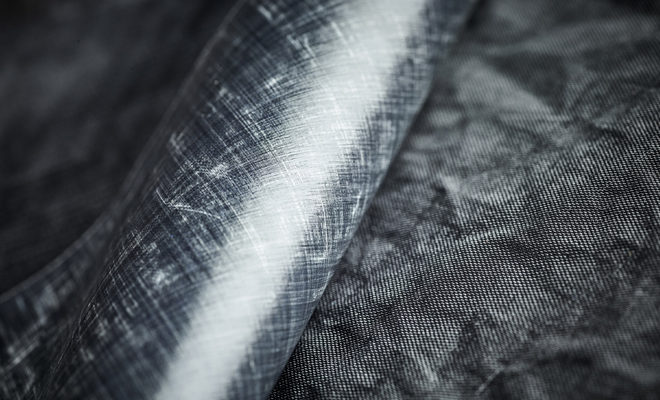
WHAT IS DYNEEMA?
Like nylon or polyester, at its rawest Dyneema is a synthetic fiber. Developed by Dutch company DSM, it’s one of the two predominant UHMWPE fibers along with Spectra. According to DSM it all began in 1963 when chemist Albert Pennings fortuitously decided to stir a pot containing a polyethylene solution and noticed strands forming. Those strands proved to be extremely strong. The company at the time had no interest or experience in fibers and was reluctant to pursue the discovery, but the scientist involved persisted, often working in secret, after hours. Almost 20 years later DSM finally managed to turn those super strands into an industrial product, with a patented process called gel spinning. Initially the fiber found applications in industrial, military and medical fields around the late ’70s. Touted as the strongest fiber in the world, Dyneema established an impressive list of uses including fortifying cockpit doors and in low profile surgical implants. As the production of the fiber became more sophisticated, the range of Dyneema textiles grew wider and more suitable for bag and apparel applications. In the carry world, the full capabilities of Dyneema are still being explored. Currently it’s mostly used as a woven or non-woven fabric, or as a composite such as Gridstop or what’s now known as Dyneema® Composite fabrics (formerly Cuben Fiber).
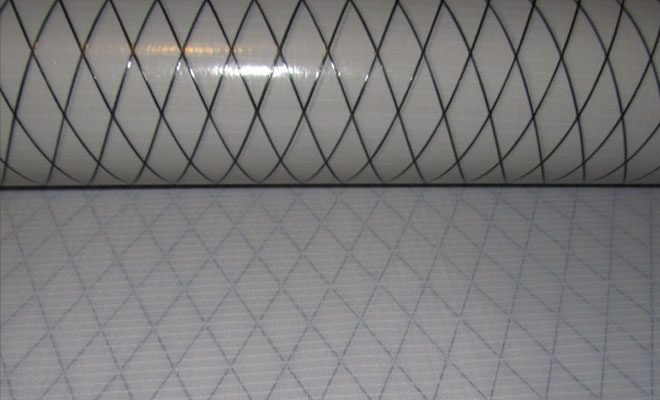
WHAT IS X-PAC?
Not to be mistaken with the WWF wrestler, X-Pac is a composite fabric comprised of multiple layers laminated into a single sheet. The layers in the standard pack cloth consist of a nylon face fabric, a polyester “X-Ply” mesh, a waterproof film and light taffeta backing with a water-resistant coating. Developed and distributed by the sailcloth makers Dimension-Polyant, the company discovered that much of the technology they had developed for making specialized racing sails was also capable of producing a unique bag material. A good sail needs to be as light as possible, whilst strong enough to withstand the forces running through it. To retain its intended shape the fabric needs to be stable across all dimensions. It also needs to survive the elements by not absorbing water and being resistant to UV. With these properties, and with the fabric being relatively accessible, it’s no surprise that cottage industry bag makers jumped on board. In particular, the waterproofness and structure of the fabric was far greater than other lightweight materials used at the time, such as silnylon. The waterproof film provides waterproofness up to 200 PSI, which means packs are pretty much rainproof and don’t gain weight whilst hiking in the rain.
“X-Pac is a composite fabric comprised of multiple layers laminated into a single sheet.”
WHAT DO ALL THOSE TECHNICAL TERMS MEAN?
UHMWPE stands for Ultra High Molecular Weight Polyethylene and it’s the highest quality form of polyethylene used today. What separates it from standard polyethylene is its extremely long polymer chains and obviously its high molecular weight which make it an extremely tough material. Ironically, these same properties mean it can’t be processed with normal plastic processing methods such as the extrusion process used to create nylon yarns. Hence the invention of gel spinning. In basic terms, gel spinning involves dissolving the polymer in a solvent to form a gel, which is then spun. On a molecular level the best description of the result is that it’s like turning a mess of fresh tangled pasta into a neat pack of dried spaghetti.
A laminated fabric is made by taking multiple layers of material and bonding them into a single sheet using either heat, pressure or glue. Like plywood, this can result in a fabric that’s stronger than the sum of its parts, or it can be used to combine the desired characteristics of various materials into one super fabric.
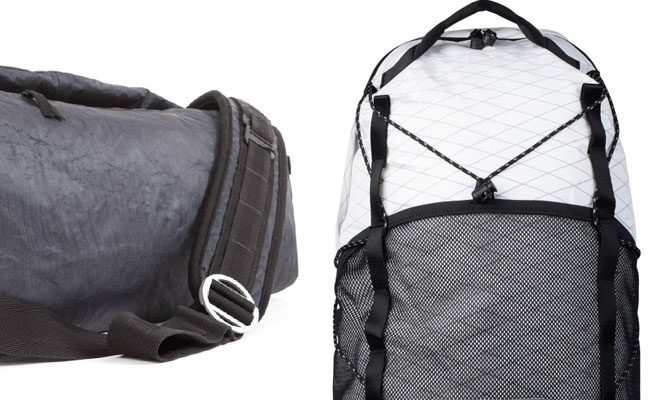
WHAT ARE THE KEY DIFFERENCES?
Because X-Pac is a laminate technology and Dyneema is a fiber it’s impossible to do a direct comparison of the two. The raw Dyneema fiber can be used to produce all sorts of fabrics such as the knits and leathers starting to appear through the Dyneema Project, and there are a bunch of different X-Pac variations commonly available. To complicate things further there are variants of X-Pac made with Dyneema. But looking at the different gear being produced in either material today there are some useful takeaways. Through an ultralight lens the factors to consider are weight, cost and durability.
As Dyneema is the strongest fiber it’s logical that it produces the lightest material. A 100D Dyneema yarn is roughly twice as strong as a 100D nylon yarn, therefore you can reduce the Dyneema to 50D and achieve the same strength. For a 30-liter pack Dyneema will save you around 100gms over X-Pac. But this comes at a cost as it’s also the more expensive of the two. You can pay up to twice as much for a similar pack made from a Dyneema composite than one made from 210D X-Pac. Anecdotally X-Pac has been the more durable of the two; its better abrasion resistance means gear is going to last longer in the field. That said, CiloGear have developed a unique Woven / Non woven Dyneema laminate that they say is the most durable fabric they’ve ever seen.
“As Dyneema is the strongest fiber it’s logical that it produces the lightest material. But this comes at a cost as it’s also the more expensive of the two.”
To clarify those comparisons, we’re talking about fabrics that are predominantly Dyneema. There are starting to be more fabrics that blend small amounts of Dyneema into weaves, such as Gridstop. In theory incorporating a small amount in a smart way gives you the benefits without as much cost. But sometimes I get the sense that it’s as much about marketing as it is about durability.
SUMMARY?
If the ultralight movement is about pushing efficiency to the extreme, then it’s hard to go past Dyneema as the ultimate fiber for the job as right now its strength to weight ratio can’t be beaten. And funnily, the combination of Dyneema and X-Pac into a single composite fabric looks to produce the most extreme fabric currently available. However, it does raise the question of how much a gram is worth to you. Whilst still not cheap, the more affordable varieties of X-Pac produce great packs that offer significant weight savings over a similar style nylon bag. And for those wanting to make their own gear, X-Pac is a lot easier to get hold of and comes in a range of colors. So for those starting out on their ultralight adventures or for more pragmatic mountain climbers, the standard X-Pac varieties offer a reliable, high-performance option.
The difficulty as a consumer is that sooner rather than later another super innovation will come along with a new set of pros and cons to wrap your head around. Word from those in the industry is that there are exciting developments just on the horizon. Spectra are reportedly working on some amazing new stuff and totally new synthetic fibers are being developed. In the end, I think the best lesson we can all take from the ultralight scene is to put more time and thought into the things we buy and make. And that less is more.
Thanks to CiloGear and Seek Outside for their input.
Janis Lacey is the founder of Soft Serve Goods design agency.





 Carry Awards
Carry Awards Insights
Insights Liking
Liking Projects
Projects Interviews
Interviews
